One of the challenges while refreshing a room with paint is to figure out the wait time for the paint to dry.
The truth of it is, whether you’re an experienced home decorator or an eager real estate investor looking for their next project, understanding exactly how long interior paints need to be set before being exposed to foot traffic is an important factor no matter what. Read on with us — in this blog post, we will be examining the various types of paint and exploring all the factors that influence its drying time.
- Brands and price matter
- So how long does it take for interior paint to dry?
- What types of paint dry the fastest?
- Factors that affect paint drying time
- Tips for Ensuring Proper Drying Conditions and Timeframe for Interior Paints
- Having proper ventilation.
- Maintaining a specific level of humidity inside the room where you’re painting.
- Ensuring that there is adequate space between objects being painted and other surfaces around them, such as furniture or walls.
- Give your paint ample time to dry before introducing any additional exposure
- Benefits of Understanding Paint Drying Time
- Invest in a specialist painter to ensure your space looks its best
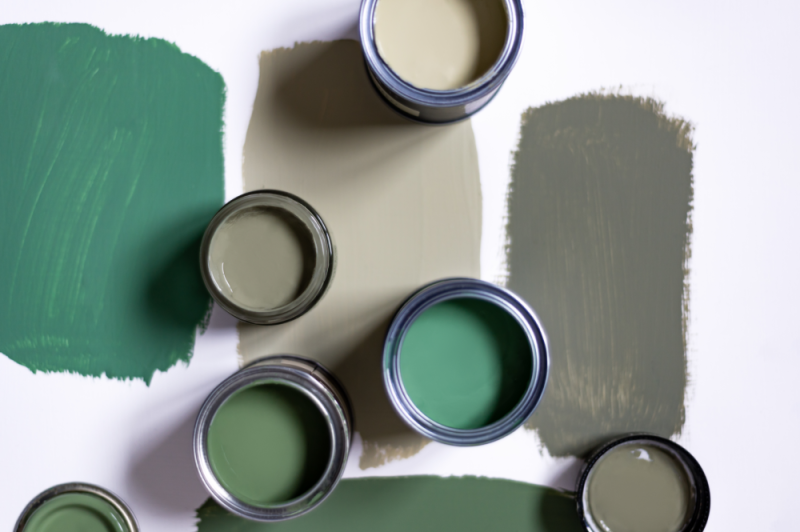
Brands and price matter
Investing in low-cost paints will only result in a larger mess and, ultimately, greater costs. Poor quality paint often takes longer to dry or offers an inadequate finish—all of which will cost you more money down the road.
With an impeccable reputation for providing best-in-class interior and exterior paints, many professional painters tend to turn to either Sherwin-Williams or Benjamin Moore paint products. Both guarantee outstanding quality every time resulting in a freshly painted room with low- or zero-volatile Organic compounds (VOC) properties.
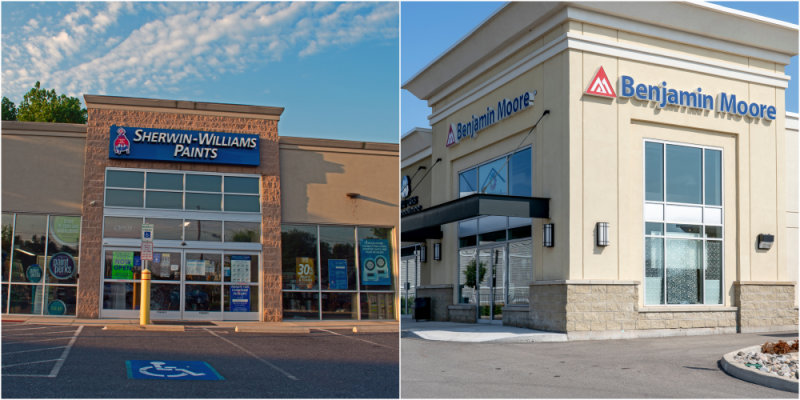
So how long does it take for interior paint to dry?
For perfect results, you should defer hanging art or any other use of a newly painted surface until your paint project has fully gone through three distinct stages:
Feeling dry to the touch
Ready for a second coat
Fully cured
These stages are essential to achieving long-lasting results.
Important: For a superior finish that avoids unsightly dripping, two thin coats evenly distributed are always better than one thick coat.
What types of paint dry the fastest?
Depending on the paint, drying times can vary significantly; you may need to wait longer for some paints to dry than others.
Latex paint
Latex paint is often considered the most common type of paint and they dry relatively quickly. Generally speaking, latex paints dry in 1 to 2 hours and be ready for another coat in about 4 hours.
Latex paint is also easily cleanable with soap and water and is environmentally friendly. This type of paint is great for interior walls and trims, as well as exterior siding or fences.
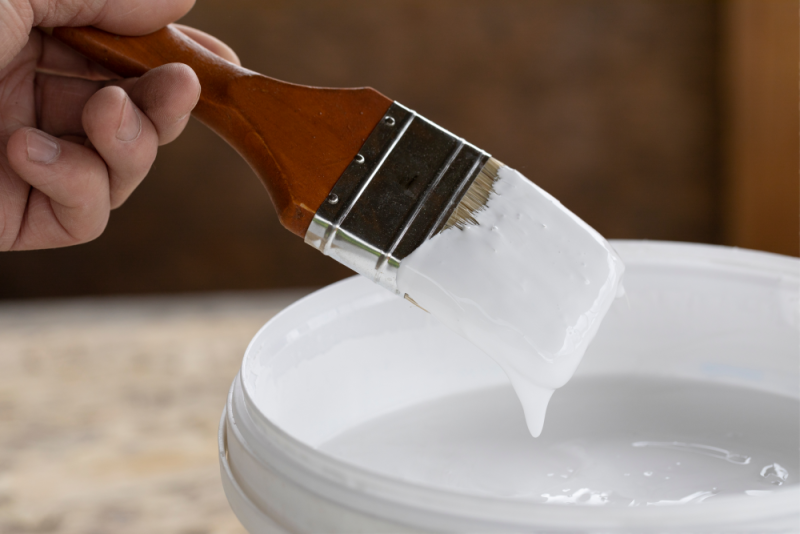
Acrylic paint
Acrylic paints are another common type of paint that many people use for their projects. Acrylic paints tend to dry very quickly—often within 15 minutes—but typically need about 2 hours before applying a second coat.
Acrylic paints come in various grades and qualities, with some being more durable than others depending on their intended purpose. They are also easy to clean up with soap and water like latex paint.
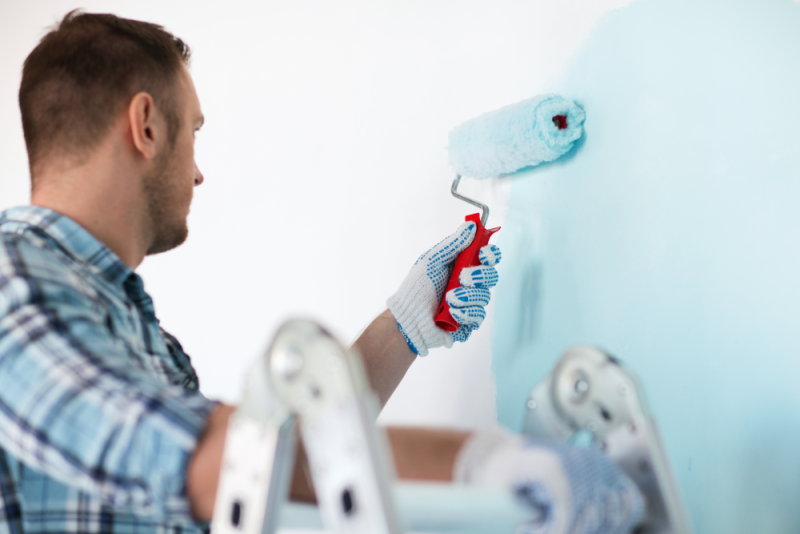
Oil-based paint
Oil-based paint is a bit more difficult to work with compared to acrylic or latex varieties, but they have certain advantages that make them ideal for certain projects.
Oil paint takes longer than acrylic or latex paint to dry, usually at least 8–12 hours before a second coat can be applied, but they provide an extra layer of protection against wear-and-tear and stains due to their oil content which makes them extremely durable.
Oil paint also offers excellent resistance to moisture which makes them perfect for outdoor surfaces such as decks or porches that will be exposed to frequent weather changes throughout the year.
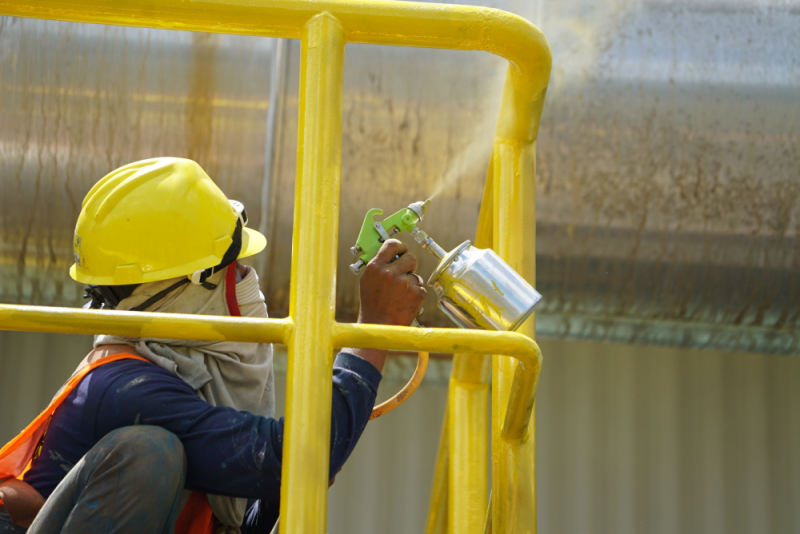
Specialty Paint
Specialty paints such as chalk paint or magnetic paint require some special considerations when applying. The reason for this is some of these products often contain unique ingredients that require specific preparation steps prior to use, along with special application techniques, as well as special drying times afterwards due to their unique properties.
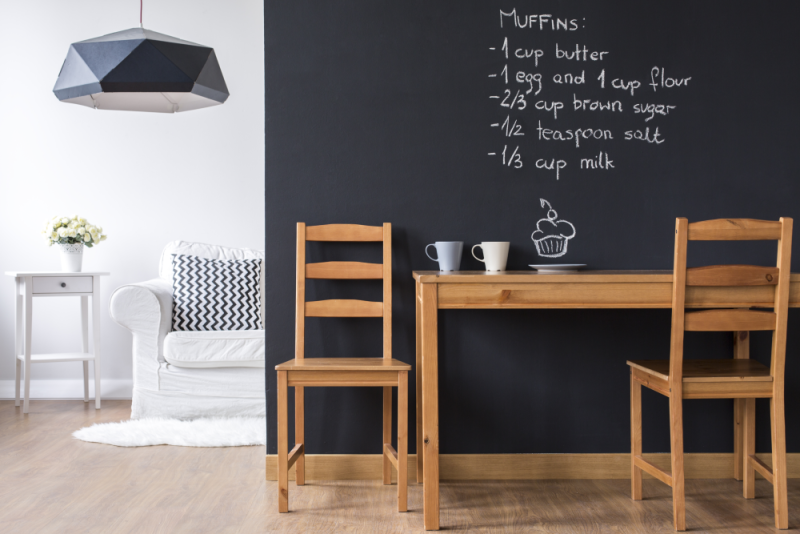
Factors that affect paint drying time
When it comes to painting the interior of your home, one factor that plays a large role in determining the project timeline is the drying time of paints. Depending on several factors such as temperature and humidity, interior paints can take anywhere from a few hours to several days to dry completely.
Understanding what impacts drying time for interior paints is key to determining how quickly you can move on with your other projects.
Temperature
The temperature has an enormous impact on how quickly paint will dry. Generally, higher temperatures cause paint to dry faster than lower ones. In addition, if the temperature is too high (over 80°F/26.6°C), it can lead to cracking or bubbling due to the paint drying too quickly and unevenly.
In contrast, temperatures below 55°F/12.7°C will cause paint to take longer and longer periods to dry, which could lead to problems such as mildew or mould growth on walls with prolonged dampness.
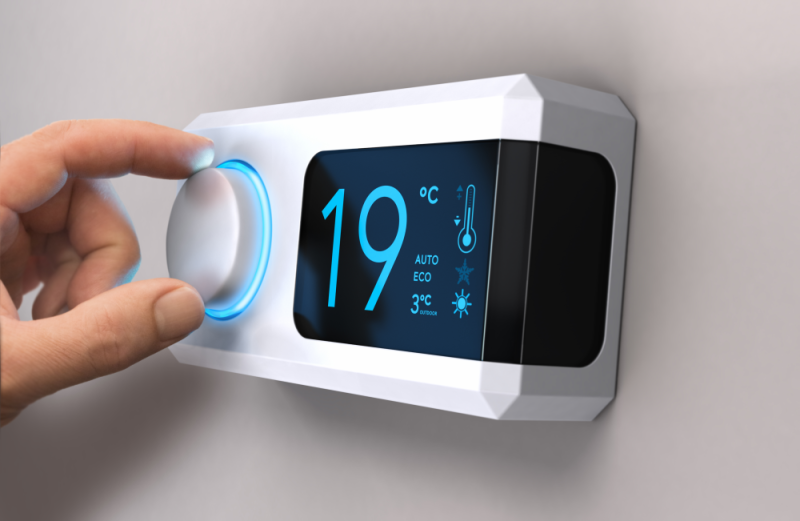
Humidity
Humidity also has an effect on drying times for interior paints. High humidity levels will impede the evaporation of the water in the paint and slow down its drying process. The higher the moisture content in the air, the longer it takes for paint to fully cure—so it’s best to avoid painting when humidity is high.
On the flip side, drier climates with less humidity may speed up drying times but could also cause cracking in some cases due to exaggerated evaporation of water from surfaces like wood panelling or brickwork.
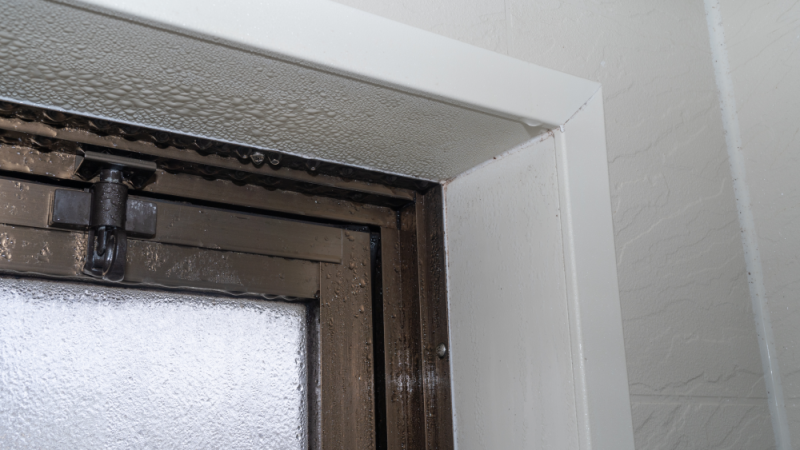
Type of finish
The type of finish used can also affect drying time.
Flat finishes usually require more coats and thus more time for drying due to their reduced ability for evaporation compared with satin or semi-gloss finishes. However, flat finishes are much easier to touch up if any scuffs or scratches occur during use.
Glossier finishes tend to take longer between coats but will provide a durable surface that’s easy to wipe down and clean should dirt accumulate over time – this is why they’re often used in bathrooms or kitchens where frequent cleaning occurs.
Important: Oil-based paints
Finally, oil-based paint takes longer drying times compared with latex-based paints; oil-based paints typically require 24 hours between coats while latex-based products may only need 4–6 hours, depending upon weather conditions and other factors mentioned above.
Therefore, if you choose an oil-based product, be ready for a long wait before doing additional projects inside your home!
Tips for Ensuring Proper Drying Conditions and Timeframe for Interior Paints
Regarding interior painting, ensuring proper drying conditions and a recommended timeframe are essential steps in the process. The key to avoiding problems down the road is to ensure that your paint dries correctly and quickly. Proper ventilation and humidity levels are essential elements to achieving this goal.
Having proper ventilation.
This means having an area with enough airflow so that the fumes from any paints or primer do not linger. Opening windows, using fans and keeping air conditioners running can help circulate air in the area so that evaporation of the paint can take place more quickly.
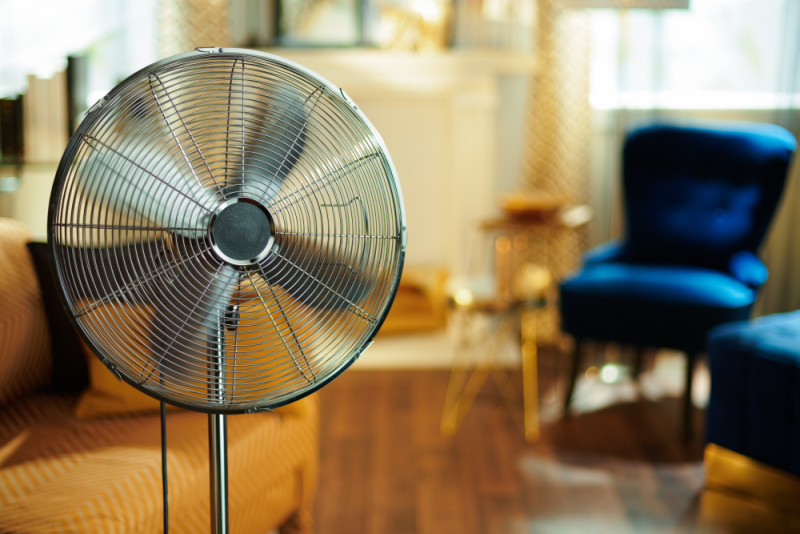
Maintaining a specific level of humidity inside the room where you’re painting.
While lower humidity is generally preferred when painting indoors, too much humidity can cause problems with drying times as well as bubbling or blistering in the paint. Using a humidifier, if necessary, can help adjust any overly humid rooms to be within an optimal range for painting.
Ensuring that there is adequate space between objects being painted and other surfaces around them, such as furniture or walls.
This will prevent any possible colour transfer due to the surface temperature differences between these items while also allowing more air circulation which helps decrease drying timeframes even further.
Give your paint ample time to dry before introducing any additional exposure
Sometimes, direct sunlight or lightbulbs could cause heat damage or premature aging of your newly applied paint job.
The curing process takes longer than the drying process, and some paints require at least 24 hours of curing before they should be exposed to direct sunlight, although oil-based paints may need longer drying periods than latex paints (often up to 48-72 hours).
Follow these guidelines carefully and make sure to read all instructions on individual cans of paint prior to use for accurate information on how long each particular type needs for it to be completely dry before exposing it to further wear and tear or additional layers of paint over top of it.

Benefits of Understanding Paint Drying Time
Understanding paint drying times is a critical part of any painting project, whether there are DIY projects or a job for a professional painter.
Understanding paint drying times allows you to plan your project more efficiently
This knowledge helps you avoid wasting time by having too much or too little paint on hand. It also prevents unnecessary delays such as waiting for areas of the wall or ceiling to dry while still allowing other parts of the room to be painted. You can also plan out when certain tasks should be done in order to minimize total working hours and maximize efficiency while still ensuring that every step has been taken properly.
Understanding paint drying times ensures that your painting job will be of the highest quality possible
If you apply too many coats of paint before it’s had time to dry correctly, then it won’t have the same level of finish as if all coats were applied correctly with enough time given between each one for optimal adhesion.
Additionally, if you don’t let each coat fully dry before moving on to another task, then there is always a possibility that something could go wrong with either the finished product or even with safety issues due to having wet surfaces around people or other objects.
Knowing about paint drying time can save you time and money in many ways
For example, if you spread out tasks accordingly, based on how long certain finishes take to dry, then this can prevent costly mistakes that would otherwise be made due to rushing through tasks all at once without giving them enough time in between them for drying completely.
Additionally, if you know exactly when each layer should be applied, then you can avoid problems caused by not letting previous layers fully dry before moving on.
Invest in a specialist painter to ensure your space looks its best
With all the different types of paint, it’s hard to know where to start. It’s undeniable that having a thorough understanding of how long paint takes to dry can provide you with an invaluable perspective.
If you’re still feeling unsure about tackling a painting project yourself, Renaissance Painting and Carpentry is always here to help. We specialize in interior and exterior painting, as well as custom carpentry built to last. So get in touch with us today and let’s transform your space into your dream home!

